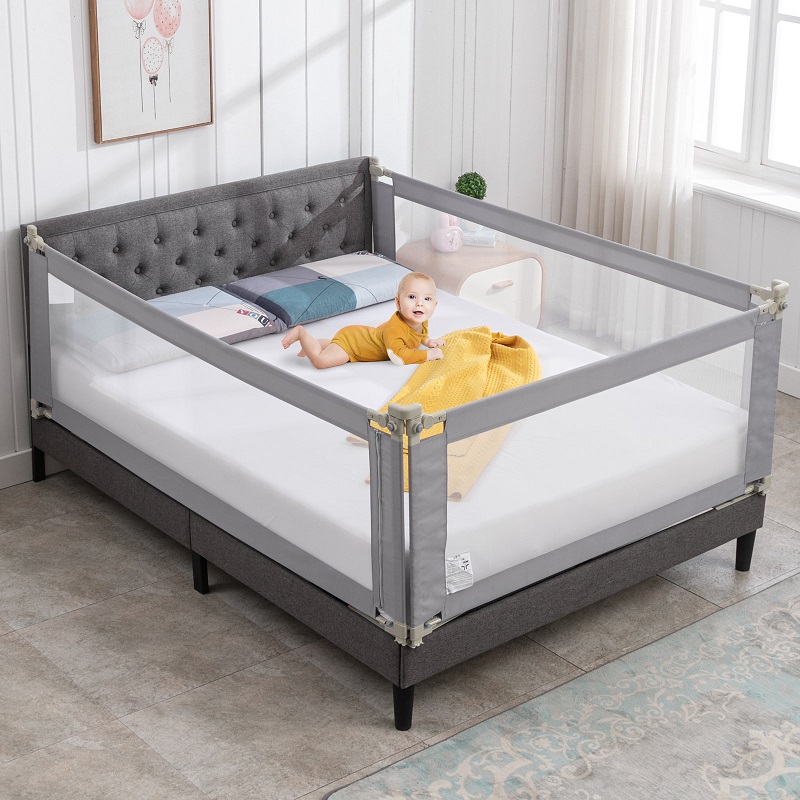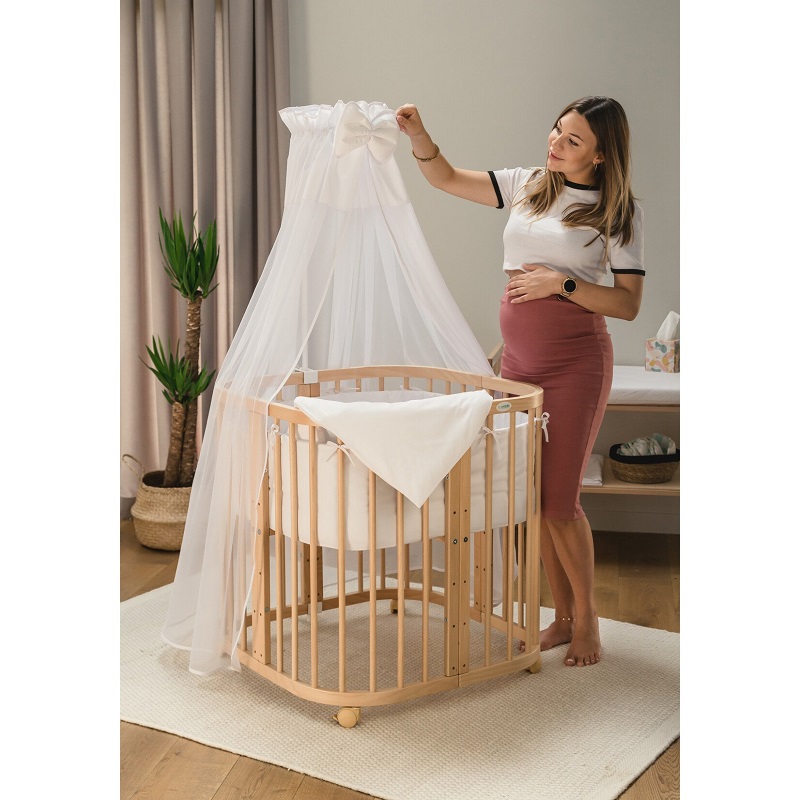Immediate Steps to Take After Your Baby Falls
Discovering that your baby fell off the bed can be terrifying. Stay calm and take the following steps to handle the situation effectively:
- Do not move your baby hastily. If they show signs of serious injury, especially to the head or neck, it’s crucial not to move them too much, as this could worsen any injuries.
- Assess the baby’s consciousness. Gently check if they are awake and alert. If they’re not responsive or if they seem dazed, immediate medical attention may be necessary.
- Examine for visible injuries. Look over your baby’s body for cuts, bruises, or any deformities. Pay special attention to their head, as falls often result in head injuries.
- Comfort your baby. If they’re conscious and there are no signs of severe injury, pick them up gently and soothe them. Your calm presence can provide reassurance.
- Keep your child still and observe. If your baby is not showing immediate signs of distress, it’s important to keep them still and observe them for any changes in behavior or signs of pain.
- Apply a cold compress. For minor bumps, gently apply a cold pack or cloth-wrapped ice to the affected area to reduce swelling.
- Monitor for changes. Even if your baby seems fine at first, watch for any delayed symptoms like drowsiness, vomiting, or loss of appetite, which could indicate a more serious issue.
- Consult with a pediatrician. Whether or not your baby fall shows immediate signs of injury, a call to your pediatrician for advice is a wise precaution. They can guide you on what to watch for and whether an in-person evaluation is needed.
These quick-response measures are essential for ensuring your baby’s safety and well-being after a fall. Should any disturbing signs arise, don’t hesitate to seek emergency care promptly.

Recognizing Signs of Serious Injury
After your baby has fallen, it’s crucial to recognize signs that may point to a serious injury. Immediate action can make all the difference. Here’s what you should look for:
- Unusual crying or fussiness. If your baby cries more than usual or is hard to console, this might be a sign of discomfort or pain from a potential injury.
- Changes in consciousness. Watch for signs that your baby is more sleepy than usual, has trouble waking up, or shows any loss of consciousness.
- Irregular breathing. If your baby’s breathing seems uneven or they have trouble catching their breath, seek immediate medical help.
- Visible marks of injury. Look for bumps, bruises, cuts, or swellings, especially around the head or soft spots. These can indicate more serious injuries underneath.
- Fluids from the ears or nose. Leakage of clear or blood-tinged fluid could suggest an internal injury and requires immediate medical attention.
- Seizure activity. Any shaking, twitching, or body stiffening are red flags that signal the need for urgent care.
- Differing pupil sizes. If one pupil is larger than the other, this could indicate a head injury and warrants swift medical evaluation.
If you notice any of these signs, or if something just doesn’t feel right, trust your instincts. It’s better to err on the side of caution and consult with a healthcare professional immediately.
How to Treat Minor Bumps at Home
When your baby encounters a minor fall, it’s essential to know home care steps. Here’s a simple guide:
- Apply a cold compress. Use a clean cloth wrapped around ice or a cold pack. Press it gently against the bump for 20-minute intervals.
- Keep your baby calm. Breastfeed, cuddle, or distract your baby fall with a toy to soothe them.
- Observe for swelling reduction. Note if the bump appears to be getting smaller over time.
- Monitor for discomfort. Watch if your baby seems fussy or in pain, and provide gentle comfort.
- Provide recommended pain relief. If your pediatrician agrees, give the correct dose of acetaminophen or ibuprofen.
- Watch for changes. Keep an eye on your baby for new or worsening symptoms. If in doubt, call your doctor.
- Avoid aspirin. Never give aspirin to your baby, as it can cause serious health issues.
Remember, while minor bumps often heal on their own, monitoring your baby afterwards ensures their safety. If you’re uncertain or the bump seems severe, consult with your pediatrician for advice.
When to Seek Emergency Medical Attention
Knowing when a fall requires emergency medical attention is critical. Here are key indicators:
- Loss of consciousness. If your baby is unresponsive, call 911 immediately.
- Difficulty breathing. Any breathing irregularities demand urgent care.
- Severe bleeding. Profuse bleeding requires prompt medical aid. Apply pressure until help arrives.
- Leaking fluids from ears or nose. Clear or bloody discharge signals a need for emergency services.
- Pupils of varying sizes. This could indicate a serious head injury.
- Persistent vomiting. Repeated vomiting needs medical evaluation right away.
- Sudden drowsiness or wakefulness issues. Extreme sleepiness or difficulty waking up is concerning.
- Seizure activity. Convulsions or twitching necessitate immediate medical intervention.
At any of these signs, seek professional medical assistance without delay. While minor bumps can be treated at home, these symptoms may signify a severe condition that requires quick action. Remember, staying composed and reacting swiftly can make a substantial difference in your child’s health outcome.

Understanding Common Causes of Infant Falls
Infant falls can occur for many reasons. Here are common causes:
- Unsteady movements. Babies learning to crawl or walk can easily lose their balance.
- High places like beds or sofas. Babies may roll or wiggle off raised surfaces.
- Climbing on furniture. Curious babies often attempt to climb, leading to tumbles.
- Slipping. Wet or slick surfaces can cause babies to fall.
- Gaps in supervision. Babies can move quickly; a moment’s distraction can lead to falls.
- Improper use of equipment. Misusing cribs, high chairs, or walkers can result in falls.
- Play areas. Roughhousing or unsuitable play environments can be hazards.
Understanding these causes helps in taking proactive steps to prevent such incidents. Simple precautions around the home are key. Always supervise your baby closely, especially in areas where they might fall. Baby-proof high-risk areas with safety gates, corner guards, and non-slip mats. Remember, creating a safe environment reduces the risk of falls significantly.
Prevention Strategies to Avoid Baby Falls
To prevent baby falls, it’s important to implement safety strategies in your home. Here are key measures you can take:
- Supervise your baby closely at all times, especially when they’re on high surfaces or exploring new areas.
- Use baby gates to block off stairs, doorways, or rooms that pose a fall risk.
- Secure furniture such as dressers and bookshelves to the wall to prevent tipping if your baby climbs on them.
- Pad sharp corners on tables and other furniture with corner protectors to minimize injury if a fall occurs.
- Keep floors clear of toys and clutter to avoid tripping hazards.
- Ensure safe play areas by checking that play mats and rugs have non-slip backing and that outdoor play equipment is age-appropriate and well-maintained.
- Avoid walkers and jumpers which can give babies dangerous mobility before they’re ready to navigate spaces safely.
- Adjust crib mattresses to the correct height as your baby grows and starts to stand, preventing them from climbing out and falling.
- Create a safe sleep environment without loose bedding, pillows, or toys that could pose a risk for falls or other injuries during sleep.
- Educate caregivers about your safety practices to ensure consistency in preventing falls when others are watching your baby.
Remember, while accidents can happen, proactive prevention reduces the risk of falls and contributes to a safer environment for your baby to explore and grow.
Monitoring Your Baby Post-Fall: What to Look For
After your baby has a fall, close monitoring is key to ensuring their health and safety. Here’s what you should keep an eye on:
- Behavior changes. Watch for unusual fussiness, changes in sleeping or feeding patterns, or loss of interest in play.
- Physical signs. Look for new or worsening bumps, bruises, or cuts, especially on the head.
- Symptoms of discomfort. Notice if your baby is touchy or cries when a certain part of their body is moved or touched.
- Feeding difficulties. Be alert if your baby seems to have trouble sucking, swallowing, or if they lose their appetite.
- Sleep alterations. Keep track if your baby sleeps more than usual, wakes up frequently, or has trouble falling asleep.
- Milestones regression. Pay attention if your baby loses skills they had already mastered, like sitting up or babbling.
- Consolation. See if your baby can be consoled or if they remain upset despite comfort efforts.
Consult a pediatrician if you notice any of these signs or if you just feel something is not right. It’s always better to check with a healthcare expert when in doubt.

Creating a Safe Environment for Active Babies
A secure environment is vital for your active baby’s safety. Here are simple steps to follow:
- Baby-proof your home. Cover electrical outlets and use door stoppers to prevent fingers from getting pinched.
- Lower the crib mattress. As your baby grows, lower the mattress to prevent them from climbing out and falling.
- Install safety gates. Block off stairs and rooms that might be dangerous for your baby.
- Keep dangerous objects out of reach. This includes small items that could be choking hazards.
- Remove trip hazards. Keep floors free of toys and other objects.
- Use non-slip pads under rugs. This reduces the risk of slips and falls.
- Anchor heavy furniture. Secure bookshelves, TV stands, and dressers to walls.
- Pad sharp furniture edges. Use corner guards on tables and cabinets to avoid injuries.
- Check play areas. Ensure they are safe, with age-appropriate toys and safe surfaces.
- Create clear walking paths. Make sure your child has plenty of room to move around safely.
- Supervise bath time. Always be with your baby to prevent slipping in the tub.
Following these steps can help make your home a safer place for your baby as they explore and learn.
